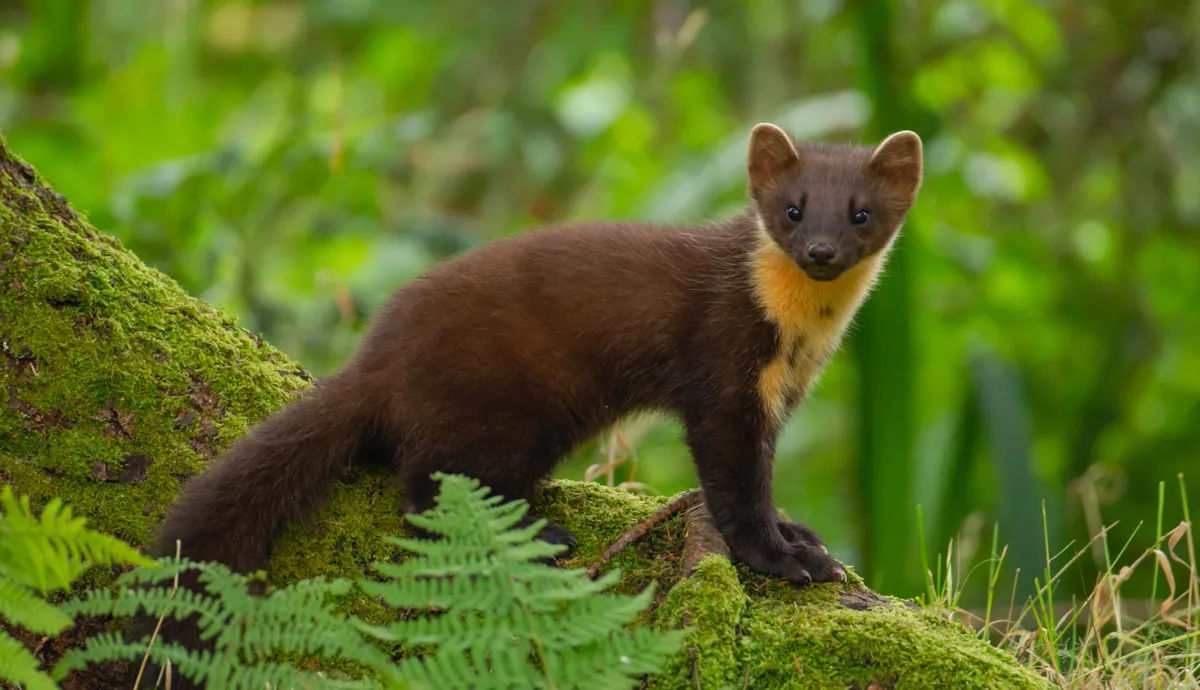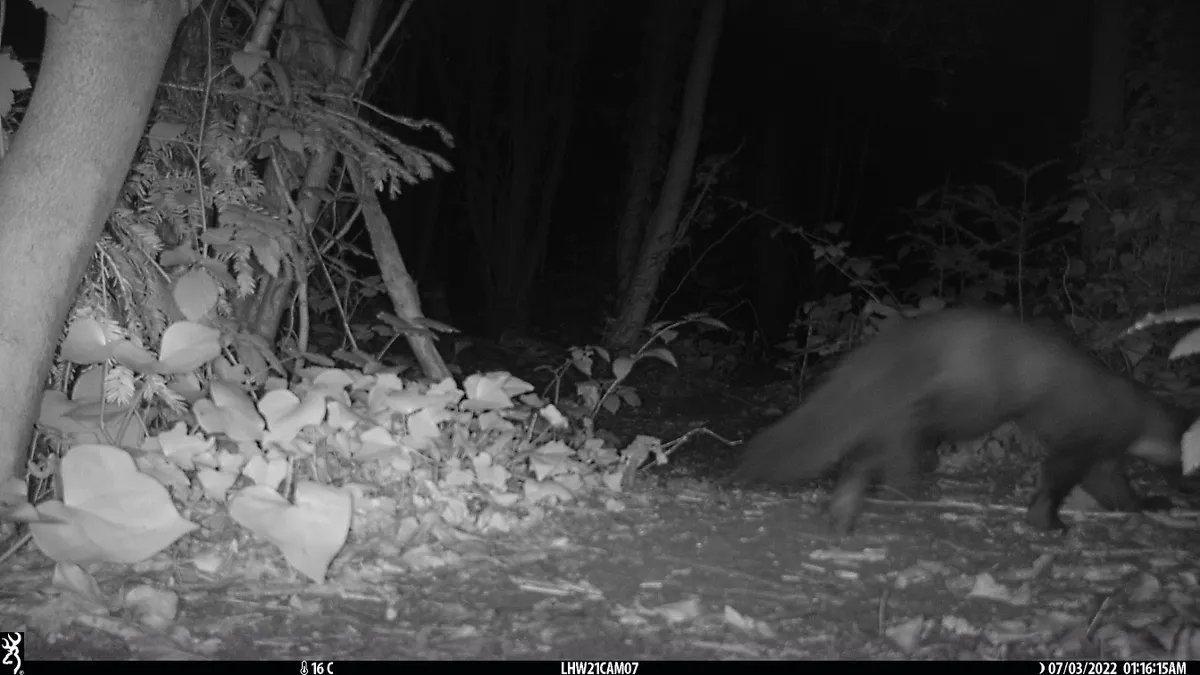A pine marten, a rare cat-sized, stoat-like mammalusually found in Scotland and the north of England, has been spotted in London for the first time in a century.
The elusive animal was snapped by a hidden wildlife camera set up in a patch of woodlands in Kingston upon Thames, south-west London, by the charity Zoological Society of London (ZSL)as part of the London HogWatch project, which aims to monitor the movements of the capital’s hedgehog population.

“As part of our ongoing hedgehog monitoring work, we deploy camera traps across woodlands," said ZSL and London HogWatch Project research assistant, Kate Scott-Gatty.
"In this area, these are usually set off by the movement of common species such as foxes and badgers, so you can imagine our surprise at seeing a pine marten – a species usually only glimpsed in Scotland and northern England.”
Pine martens (martes martes)are easily recognisable thanks to their lush chestnut-brown coats, large searching eyes, long bushy tails and characteristic peach-coloured bibs.

They were once widespread across the UK, but the charismatic animals are now critically endangered in England and Wales with only some very small populations remaining in northern England, the New Forest and Wales.
“We don’t know how the pine marten – a species that’s most commonly found in the north of the country or Scotland – came to be in London, but we’ll continue to use the HogWatch cameras to see if there are any more individuals in the area and monitor their activity,” said Dr Chris Carbone, senior research fellow at ZSL’s Institute of Zoology.
“The return of wildlife to an area can be positive, it might mean that habitat quality is improving, or natural food sources are increasing but it’s important we understand more. Any species reintroductions should only be carried out by professionals, with the appropriate checks in place – from assessing habitat suitability to screening for illnesses.”
Read more about animals: